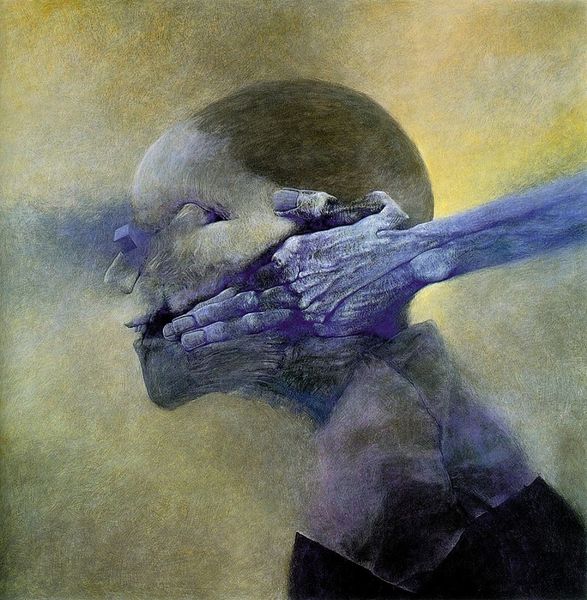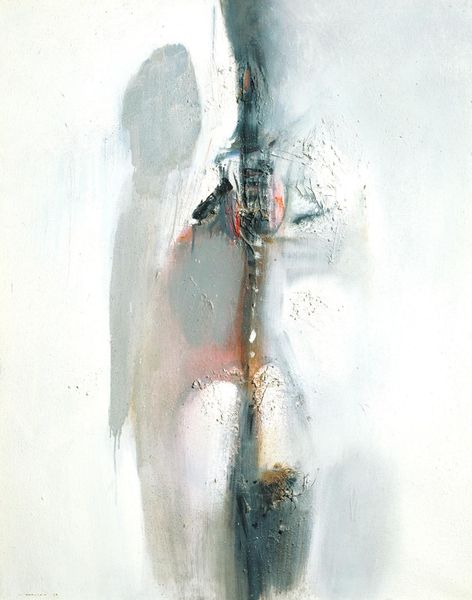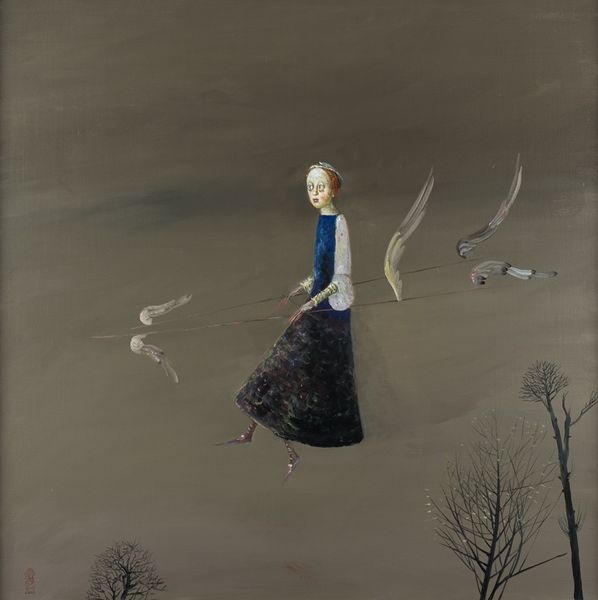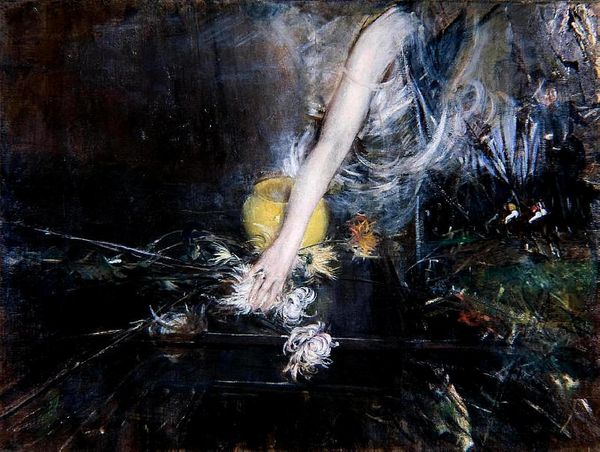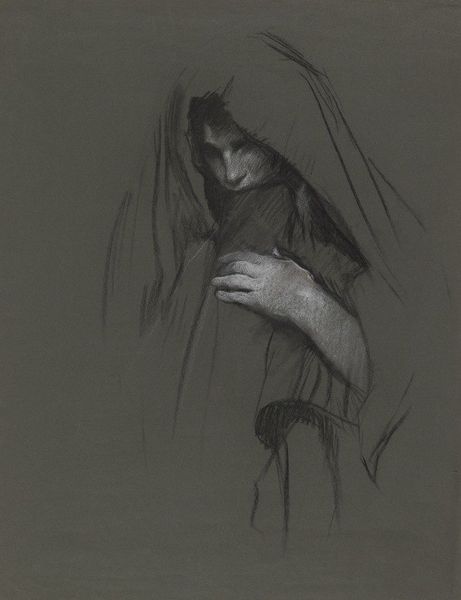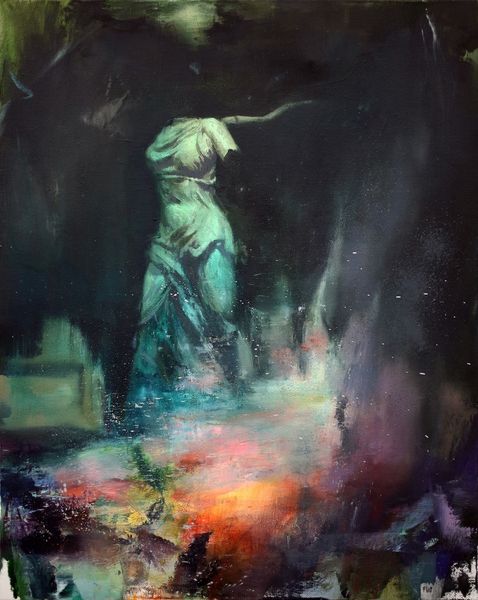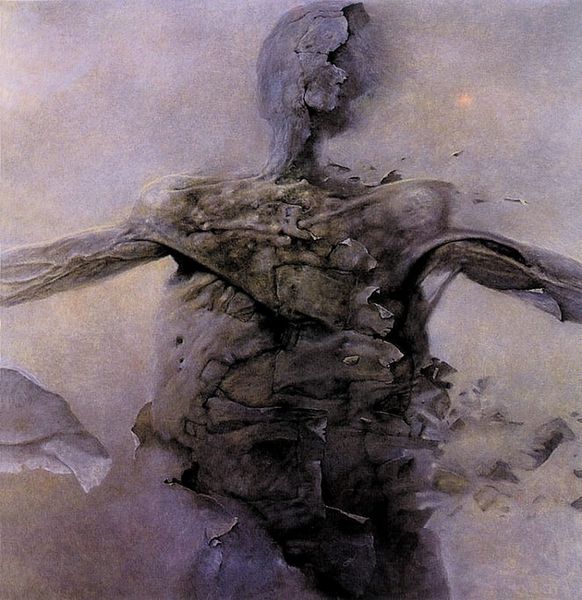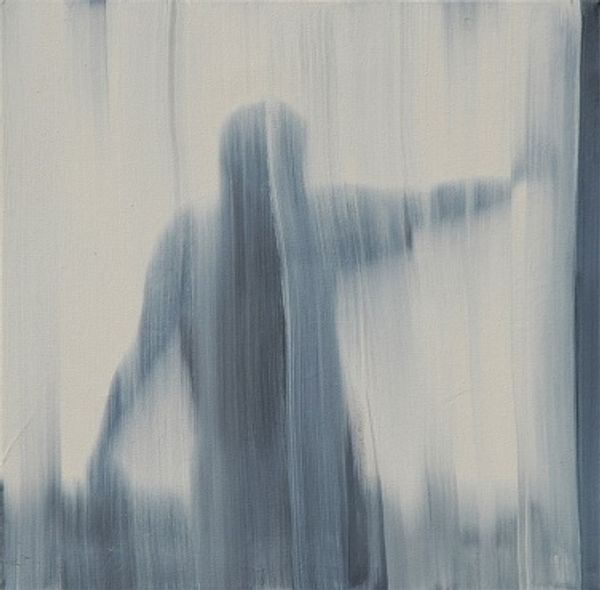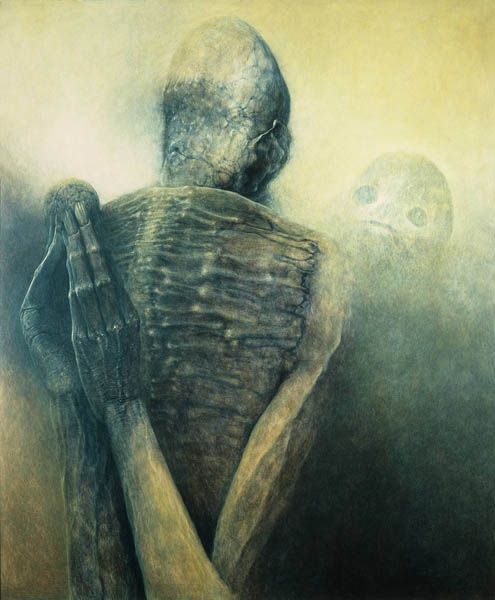
Dimensions: 92 x 88 cm
Copyright: © The Historical Museum in Sanok (Poland) is the exclusive owner of copyrights of Zdzisław Beksiński's works.
Curator: This untitled work by Zdzislaw Beksinski, created in 1998 with oil and acrylic paint, immediately evokes a sense of haunting isolation. Editor: Yes, there's a pervasive gloom. The subdued palette, primarily blues and grays, and the lone figure wrapped, seemingly, in a shroud, creates a chilling atmosphere. It looks almost post-apocalyptic. Curator: Precisely. Beksinski often explored themes of anxiety and the macabre, particularly in his later works. Notice the figure’s elongated, almost skeletal form, which emphasizes its vulnerability. The composition leads the viewer’s eye directly to the subject, a symbol perhaps of inevitable decay or even social marginalization? Editor: An intriguing interpretation. But consider, too, the neo-expressionistic brushstrokes – quick, gestural, almost violent. Beksinski isn’t just depicting a scene, he's conveying raw emotion. The obscuring of the facial features—are we meant to consider this form stripped of personhood and left only as symbol? The muted color values serve less to highlight form, than to flatten depth and call forward something that might otherwise recede. Curator: You make an excellent point. These techniques resonate strongly with the anxieties and disillusionment following the collapse of communism in Eastern Europe; perhaps his figures reflect that post-ideological void and how societies struggle with transition? This adds another dimension to its reading. The dreamscapes that never materialize as hoped. Editor: Yes. There are multiple dimensions that extend the cultural work to different points in European memory as well. Consider the landscapes of Caspar David Friedrich, where the individual appears similarly before unknowable forces, and similarly composed by strokes of light and depth. Beksinski's style might even resonate with a long lineage of sublime art, prompting viewers to engage in moments of historical reflexivity even as they meet it new. Curator: And yet, despite its unsettling nature, the work possesses an undeniable beauty. There is complexity to the figure that is difficult to read. And the careful manipulation of light brings forward textures, creating a strangely compelling visual experience. Editor: Ultimately, I think Beksinski asks us to confront not only death and decay, but the deeper structures we place on social and cultural life, as well. A bleak reflection, perhaps, but profoundly human. Curator: I agree. The piece speaks powerfully of our own fragility and resilience, making it a deeply unsettling, and therefore powerfully memorable artwork.
Comments
No comments
Be the first to comment and join the conversation on the ultimate creative platform.



